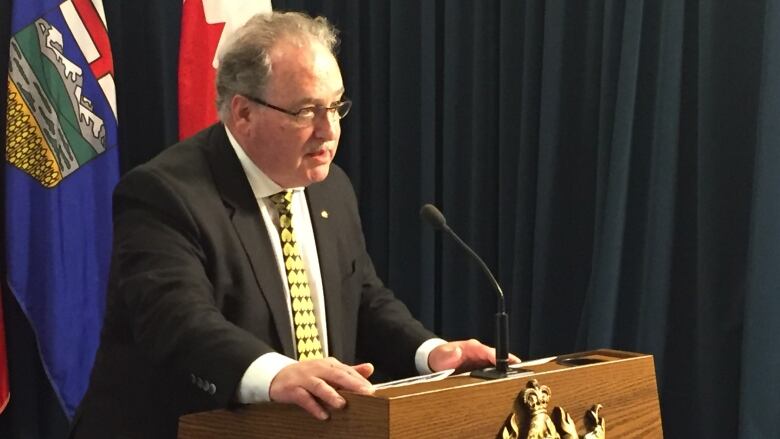Photo radar under review by Alberta government
News of review comes one hour before Wildrose news conference on photo radar misuse

The Alberta government is reviewing how municipalities use photo radar, to ensure it's being used for safety and not as cash cow.
Transportation Minister Brian Mason wants to find out if the guidelines governing how municipalities use photo radar are up to date.
"My concern is that there's a strong public view that photo radar has gone beyond just enforcing safe traffic and has become, in some cases, a bit of a 'cash cow' for municipalities," Mason said Thursday.
"From my perspective, thatis a misuse if that is occurring."
The review started two to three months ago, Mason said. The government also wants to compile information on how photo radar locations are chosen, traffic statistics and how much money municipalities are collecting from the program.
As an example, Mason noted the use of photo radar, and resulting revenues, have increased since the city of Edmonton took over the program from the police.

Mason held a hastily organized media availability one hour before Wildrose justice critic Angela Pitt held her own news conference about photo radar.
Pitt called on the government to study how municipalities use photo radar and release those results to the public by Sept. 15, beforethis fall's municipal elections.
"It's interesting that was scrambled and put together just prior to our announcement today," Pitt said.
She said Sept. 15 is a reasonable deadline for the government to release results if the review is already underway.
Better oversight
Pitt wants to ensure photo radar is being used for safety, not primarily to generate revenue.
She wants better oversight for how municipalities use the program, either through pre-approvals or regular reviews by the province.
Pitt said only four Canadian provinces use photo radar. Alberta is alone in allowingmobile speed cameras outside school and construction zones.
Alberta guidelines state that photo radar is only to be used in areas with a documented history of high collisions, a history of speeding drivers and high pedestrian traffic.
Pitt said her call for a review was inspired by statements made this week by Edmonton police Chief Rod Knecht, who said the speed limit on Anthony Henday Drive should be raised to 110 km/h.
Drivers complain that photo radar on the ring road resultsin thousands of speeding tickets every year.
Photo radar is not used on provincial highways except on the ring roads in Calgary and Edmonton.
Traditional radar is used to track speeders on roads outside municipalities.
Money from each photo-radar ticket is split between levels of government: 73 per cent to the municipality and 27 per cent to the province. A 15-per-cent victimssurcharge is levied on top of each ticket.
Edmonton Mayor Don Ivesonsaid thatThursday was the first time he'd heard the government was reviewing photo radar.
The city will gladly share any information about its photo-radar program with Mason, he said, including how Edmonton chooses locations for speed cameras.
The city took in $52.1 million in photo radar enforcement revenues last year. Revenues go into a reserve, whichprovides funding for the Office of Traffic Safety, the Edmonton Police Service, other traffic safety initiatives and third-party community infrastructure programs.
"I'm very happy to be accountable and transparent for how the City of Edmonton is using those enforcement dollars, as well as the data that shows that photo radar does reduce speeds and reduce collisions and improve safety," Iveson said.
"I think that the city's policies are robust around this, so I'm confident in our policies. What the provincial government decides to do after their inquiry is really up to them but we'll be open entirely to whatever questions they have through the process."
Last month, DraytonValley, 145 kilometres southwest of Edmonton,decided to scrap its automated traffic enforcement program after a plebiscite.












_(720p).jpg)


 OFFICIAL HD MUSIC VIDEO.jpg)
.jpg)



























































































